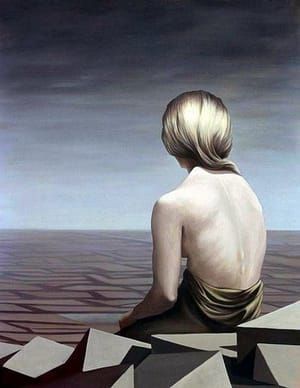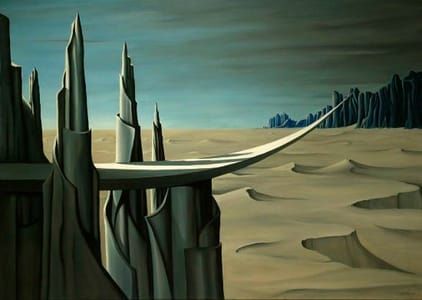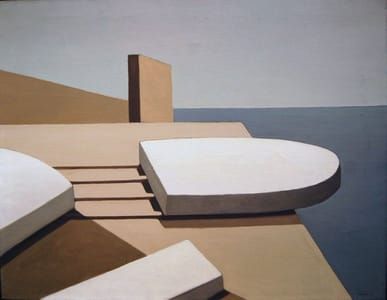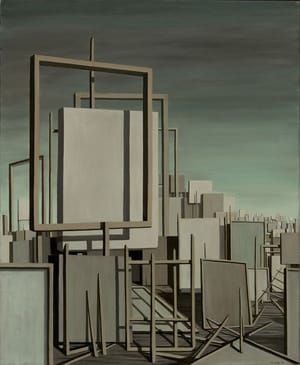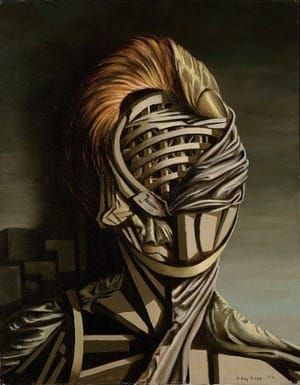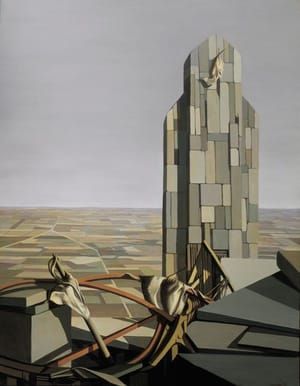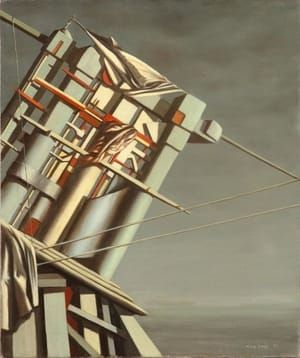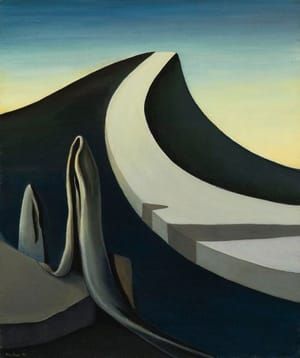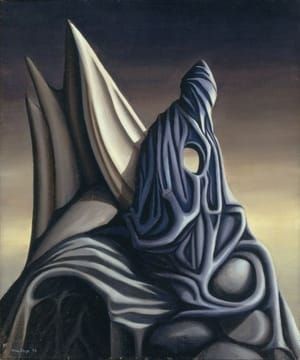
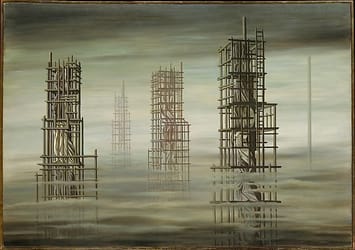
Tomorrow is Never, 1955
Kay Sage
One of the most prominent women associated with Surrealism in the United States, Kay Sage made this work after a five-month hiatus from painting following the sudden death of her husband Yves Tanguy. Like many Surrealists, she utilized landscape imagery as a metaphor for the mind and psychological states of being. Rendered in somber gray tones, Tomorrow is Never combines motifs that appear often in the later stages of her career, including architectural scaffolding, latticework structures, and draped figures, to evoke feelings of entrapment and dislocation. The painting is one Sage’s last large works before her suicide in 1963.
(http://www.metmuseum.org/art/collection/search/488856)
38 x 54 in
Uploaded on Feb 19, 2017 by Suzan Hamer
Kay Sage
artistArthur
Wait what?
